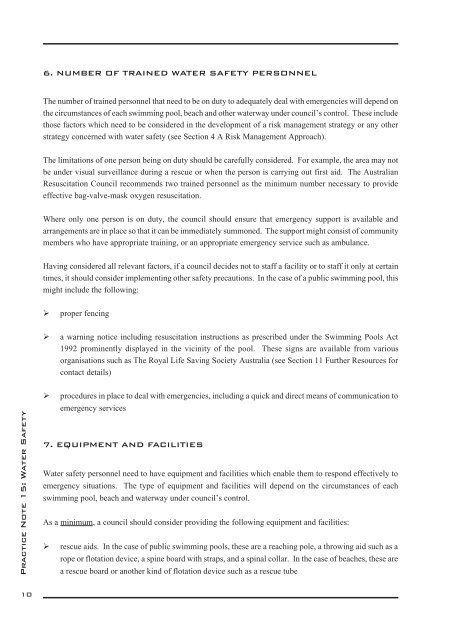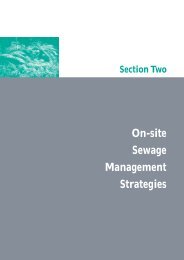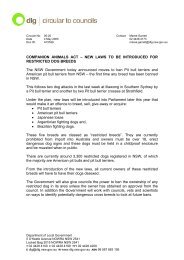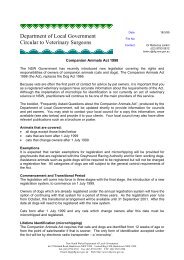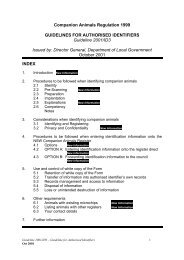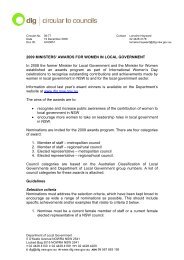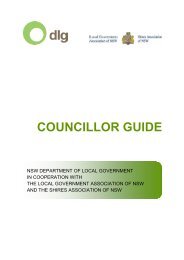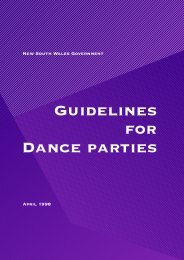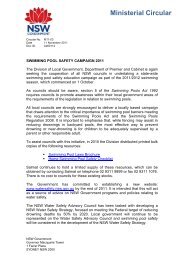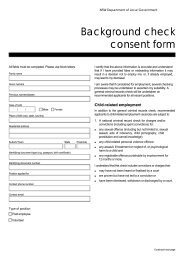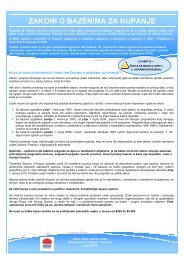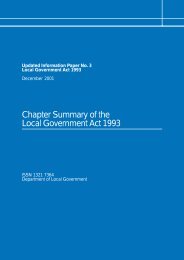Practice Note No. 15 - Water Safety - Division of Local Government ...
Practice Note No. 15 - Water Safety - Division of Local Government ...
Practice Note No. 15 - Water Safety - Division of Local Government ...
You also want an ePaper? Increase the reach of your titles
YUMPU automatically turns print PDFs into web optimized ePapers that Google loves.
6. NUMBER OF TRAINED WATER SAFETY PERSONNELThe number <strong>of</strong> trained personnel that need to be on duty to adequately deal with emergencies will depend onthe circumstances <strong>of</strong> each swimming pool, beach and other waterway under council’s control. These includethose factors which need to be considered in the development <strong>of</strong> a risk management strategy or any otherstrategy concerned with water safety (see Section 4 A Risk Management Approach).The limitations <strong>of</strong> one person being on duty should be carefully considered. For example, the area may notbe under visual surveillance during a rescue or when the person is carrying out first aid. The AustralianResuscitation Council recommends two trained personnel as the minimum number necessary to provideeffective bag-valve-mask oxygen resuscitation.Where only one person is on duty, the council should ensure that emergency support is available andarrangements are in place so that it can be immediately summoned. The support might consist <strong>of</strong> communitymembers who have appropriate training, or an appropriate emergency service such as ambulance.Having considered all relevant factors, if a council decides not to staff a facility or to staff it only at certaintimes, it should consider implementing other safety precautions. In the case <strong>of</strong> a public swimming pool, thismight include the following:Øproper fencingØa warning notice including resuscitation instructions as prescribed under the Swimming Pools Act1992 prominently displayed in the vicinity <strong>of</strong> the pool. These signs are available from variousorganisations such as The Royal Life Saving Society Australia (see Section 11 Further Resources forcontact details)<strong>Practice</strong> <strong><strong>No</strong>te</strong> <strong>15</strong>: <strong>Water</strong> <strong>Safety</strong>Ø procedures in place to deal with emergencies, including a quick and direct means <strong>of</strong> communication toemergency services7. EQUIPMENT AND FACILITIES<strong>Water</strong> safety personnel need to have equipment and facilities which enable them to respond effectively toemergency situations. The type <strong>of</strong> equipment and facilities will depend on the circumstances <strong>of</strong> eachswimming pool, beach and waterway under council’s control.As a minimum, a council should consider providing the following equipment and facilities:Ø rescue aids. In the case <strong>of</strong> public swimming pools, these are a reaching pole, a throwing aid such as arope or flotation device, a spine board with straps, and a spinal collar. In the case <strong>of</strong> beaches, these area rescue board or another kind <strong>of</strong> flotation device such as a rescue tube10


